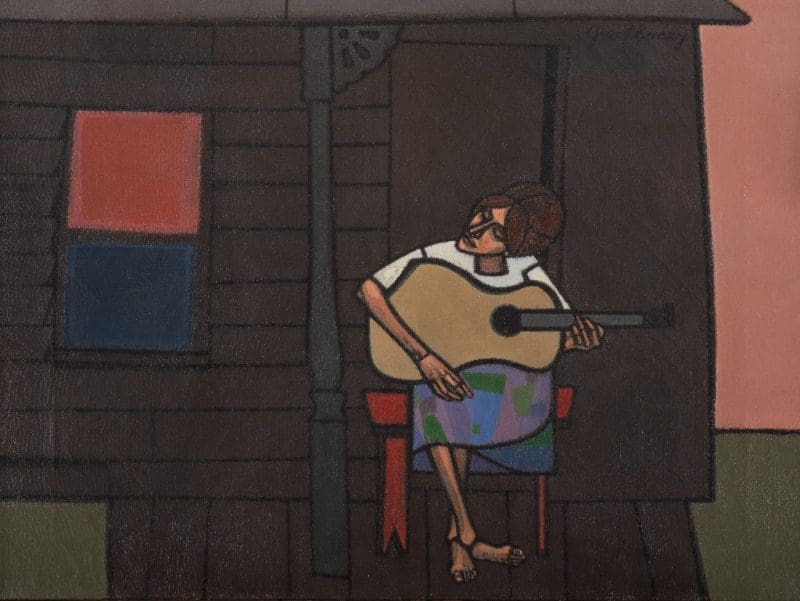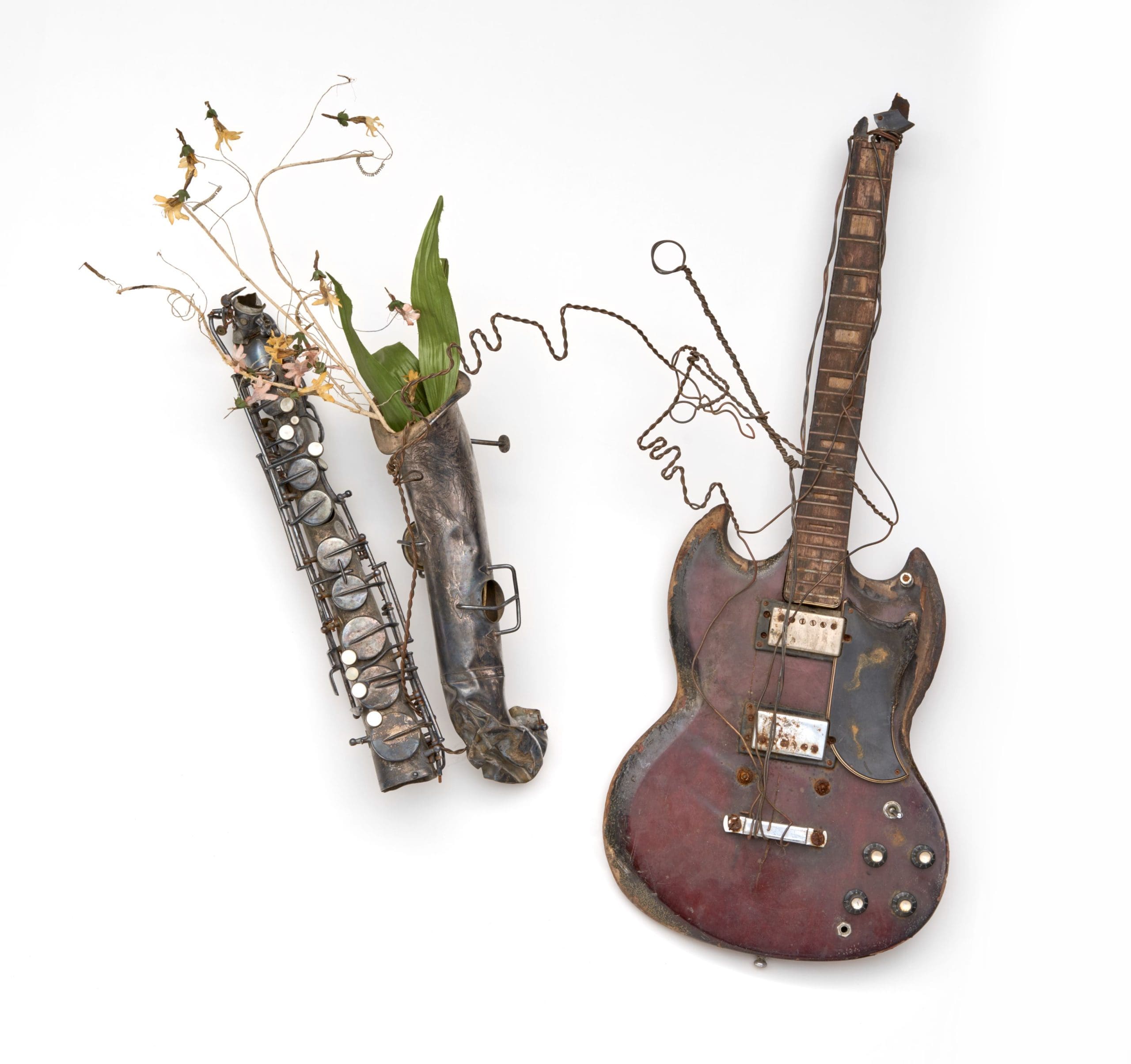Guitars have been ‘ubiquitous'
story: IAN STALKER main photo: At Home in the Evening, ca. 1940, William H. Johnson (American, 1901–1970), oil on canvas. Private Collection: Courtesy of Michael Rosenfeld Gallery, LLC, New York
The Virginia Museum of Fine Arts is showcasing an instrument that isn’t native to the United States but which it proudly states has deep roots in Virginia and has helped shape the rest of the United States as well.
Dr. Leo G. Mazow, VMFA’s Louise B. and J. Harwood Cochrane Curator of American Art, says Storied Strings: The Guitar in American Art tells of the influences the guitar has had on American society, noting guitars have been used for numerous purposes, with entertainment clearly being one, but the instrument also having served as a protest symbol.
“The guitar’s portability, relative affordability, along with the ease with which the basic chords are learned, all make the instrument ubiquitous,” Mazow says. “We cannot really say this about most other musical instruments. Moreover, just as the guitar spans multiple genres, so too does its presence in art apply to myriad, diverse contexts.

Girl with Guitar, 1965, Robert Gwathmey (American, 1903–1988), oil on canvas. Catherine Dail Fine Art, New York and Los Angeles. © 2022 Estate of Robert Gwathmey/Licensed by VAGA at Artists Rights Society (ARS), New York
“Guitars are very important in American culture past and present. Guitars are like a microphone we pass around, making sure all have a voice. Think, for example, of blues music, in which the instrument provides a means to wage critique and articulate dissent about critical themes in Black cultural history. Guitars provide a means to express and communicate, allowing both musical and visual artists to address themes and stories that might otherwise go untold or under-told.”
Storied Strings: The Guitar in American Art is aimed at both musicians and broader public, with Peck stating that an advanced musician will find much to explore in the exhibit. But she adds that the exhibition uses the guitar as a prompt for a wide range of episodes in popular culture, national history, and artistic practice in and out of the studio. personal relationships, national identity, popular religion, sense of place, and gender and sexuality.
“In art and music alike, the guitar figures in stories about relationships, national identity, popular religion, sense of place, and many other topics,” Mazow says. “The guitar is as interesting and even fun to play as it is meaningful to hear, and this comes across in many works in the exhibition.”

The Music Lives After The Instruments Is Destroyed, 1984, Lonnie Holley (American, born 1950), burned musical instruments, artificial flowers, wire. Souls Grown Deep Foundation, Atlanta, © 2022 Lonnie Holley/Artists Rights Society (ARS), New York. Photo: Stephen Pitkin/Pitkin Studio
Mazow adds that the guitar has also served as a prominent protest symbol in the United States as “the instrument has provided a large number of artists as a means to redress social inequity. Bob Dylan, Woody Guthrie, Joan Baez, and Bruce Springsteen are just a few of the hundreds (thousands?) of examples here – and this tradition continues to the peasant day, even if it does not look or sound quite the same as it may have, for example, 50 years ago.”
Meanwhile, Mazow notes the guitar has played an important cultural role in her own back yard.
“Virginia has rich folk traditions in which music figures prominently,” Mazow says. “The Bristol Sessions – often regarded as the origins of commercial country music – took place in Bristol in 1927 and 1928. From Sister Rosetta Tharpe (who owned a home in Richmond) to Bruce Springsteen (who played dozens of gigs here early in his career), Richmond itself has been the site of well-known chapters in the history of the American guitar.”
Storied Strings: The Guitar in American Art runs through March 19. More information is available at vmfa.museum.

















